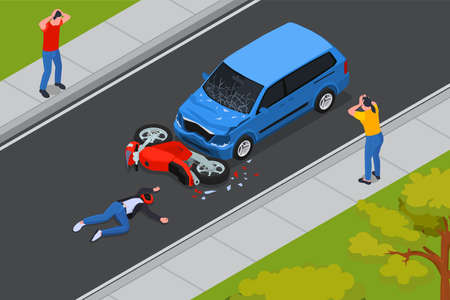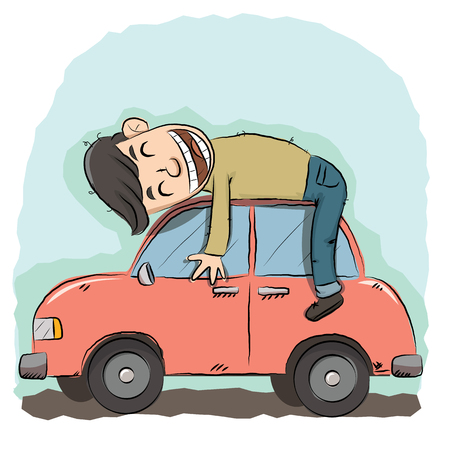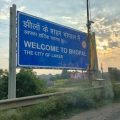1. Understanding the Challenges of Night Driving in India
Driving at night in India presents a unique set of challenges, especially for women. Indian roads after dark can become unpredictable due to a combination of dense traffic patterns, inconsistent road infrastructure, and varied social scenarios. Unlike daylight hours, many streets may lack proper lighting, making it difficult to spot potholes, unmarked speed breakers, or stray animals. Traffic tends to be more erratic, with commercial vehicles and two-wheelers often disregarding lane discipline. For women drivers, these conditions are compounded by social factors such as the presence of fewer people on the roads, which can sometimes lead to feelings of vulnerability or unease. Understanding these realities is crucial for preparing oneself and ensuring a safer driving experience during nighttime journeys across Indian cities and highways.
2. Essential Vehicle Checks Before Hitting the Road
Before embarking on a night journey, especially for women drivers in India, ensuring your vehicle is in top condition is crucial for safety and peace of mind. The unique challenges of Indian roads—from unpredictable traffic to varying road conditions—make thorough preparation even more important. Here’s how you can get your car ready for safe night travel:
Basic Maintenance Checklist
Regular maintenance keeps your vehicle reliable during unexpected situations, which are common on Indian highways and city streets at night. Below is a checklist to help you cover all essentials before you set off:
| Check Item | What to Do |
|---|---|
| Tyres | Inspect for adequate tread depth, correct air pressure, and look for any visible damage or punctures. |
| Engine Oil | Ensure oil levels are within the recommended range; top up if needed. |
| Coolant & Fluids | Check coolant level and other fluids like brake, clutch, and windshield washer fluid. |
| Battery | Look for corrosion on terminals; ensure battery is fully charged and connections are secure. |
Lights and Visibility
Visibility is a major concern during night driving in India due to poorly lit roads and unexpected obstacles. Make sure all lights are functional, including:
- Headlights (both low and high beams)
- Tail lights and brake lights
- Turn indicators and hazard lights
Clean the windshield and mirrors thoroughly to prevent glare from streetlights or oncoming vehicles—a common cause of accidents at night.
Fuel Up Wisely
Pit stops can be sparse in rural areas or during late-night hours. Always start with a full tank of fuel and keep an eye out for petrol pumps along your route. If possible, use trusted fuel stations like Indian Oil, Bharat Petroleum, or HPCL, which have better lighting and security compared to smaller outlets.
Emergency Kit Essentials
An emergency kit tailored for Indian conditions can be a lifesaver. Include:
- Torch/flashlight (with extra batteries)
- First aid kit (with locally relevant medicines)
- Bottle of drinking water and dry snacks
- Puncture repair kit or spare tyre with jack
Toll Payments & Documents
Keeps FASTag topped up for seamless toll payments, reducing stops at toll plazas late at night. Carry copies of your driver’s license, RC book, insurance papers, and PUC certificate—these documents are routinely checked at police barricades after dark.
A well-prepared vehicle not only reduces the risk of breakdowns but also boosts your confidence as a woman driver navigating India’s diverse nighttime roads.

3. PERSONAL SAFETY TIPS FOR WOMEN COMMUTERS
When driving at night in India, personal safety becomes a top priority, especially for women commuters. Indian roads can be unpredictable after dark, and taking proactive steps to protect oneself is essential. Start by always sharing your live location with trusted friends or family members using apps like WhatsApp or Google Maps; this allows them to track your journey in real-time and respond quickly if anything seems amiss. Additionally, equip your smartphone with reliable safety apps such as My Safetipin or Himmat, which are specifically designed for womens security in Indian cities. These apps can send SOS alerts, connect you directly to local police stations, and provide updates on the safest routes.
Keep a list of emergency contacts handy, both saved in your phone and written down somewhere accessible inside your vehicle—this ensures you have backup even if your phone battery runs low. Whenever possible, plan your route before you start the journey and try to stick to well-lit, populated roads. Avoid stopping in isolated or poorly lit areas, and if you sense anything suspicious or feel unsafe at any point, do not hesitate to drive to the nearest petrol pump or police check post for assistance. Remember, being aware of your surroundings and trusting your instincts are crucial elements of staying safe during nighttime drives on Indian roads.
4. Choosing the Safest Routes and Strategic Stops
When it comes to night driving in India, especially for women, choosing the right route can make a significant difference in your safety and comfort. Indian highways and city roads have their unique challenges after dark, so careful planning is essential.
Tips for Selecting Safer Routes
- Prefer Well-Lit Roads: Always opt for routes that are well-lit and regularly patrolled by police or highway authorities. Avoid shortcuts through isolated or poorly lit areas even if GPS suggests them as quicker options.
- Choose Busy Highways: Major national highways (NH) and expressways are generally safer due to higher traffic, better lighting, frequent toll booths, and regular patrolling. These are preferred over state highways or rural roads at night.
- Check Real-Time Traffic Updates: Use Google Maps, MapmyIndia, or other navigation apps with live updates to avoid deserted stretches or areas known for roadblocks or construction work.
Strategic Stops: Where to Take Breaks Safely
If you need to stop during your journey, picking the right spot is crucial. Many Indian travelers trust certain roadside dhabas and fuel stations that are well-known among locals for being safe and hospitable.
Recommended Places for Night Stops
| Type of Stop | What to Look For | Local Tip |
|---|---|---|
| Dhabas | Choose dhabas with ample lighting, visible security presence, and good crowd. | Popular places like Pahalwan Dhaba (NH44), Sukhdev Dhaba (Murthal), or any that truck drivers frequent. |
| Fuel Stations | Select 24×7 petrol pumps with convenience stores or attached restrooms. | IOCL, BPCL, HPCL outlets on main highways are reliable; avoid isolated pumps. |
| Toll Plazas | Toll booths often have security staff and CCTV surveillance. | If feeling unsafe, wait here until help arrives or call family from these spots. |
Insider Advice:
- If you’re unsure about a stop, ask local shopkeepers, highway police, or fellow women travelers for recommendations—Indians are always ready to help!
- Avoid stopping at unfamiliar or deserted places; instead, plan your stops before starting the journey and inform someone about your route and ETA.
Selecting a safe route and trustworthy stops not only reduces risks but also makes your night drive across India a more relaxed experience. With a little planning and awareness of local preferences, you can enjoy the journey with greater peace of mind.
5. Handling Unwanted Attention and Emergency Situations
Night driving as a woman in India can sometimes mean dealing with uncomfortable or even intimidating situations, but staying prepared is key. If you face road harassment such as unwanted stares, rude gestures, or someone following your car, do not hesitate to take action. Keep your windows rolled up and doors locked, and avoid engaging with the harasser. If you feel threatened, drive towards a busy area like a petrol pump or a police station where help is readily available.
Dealing with Police Checks
Police checks are common on Indian roads at night. Always keep your vehicle documents, driving license, and identification handy. Speak confidently and respectfully to the officers. If you ever feel uncomfortable during a police check, call a family member or trusted friend and let them know your location; speaking on the phone can also deter any inappropriate behavior.
Managing Vehicle Breakdowns
Breakdowns can happen unexpectedly. If your car stalls, turn on your hazard lights immediately and try to move the vehicle to the roadside. Call for roadside assistance—many cities in India now have 24/7 helplines, including women-focused towing services. While waiting for help, stay inside your locked car whenever possible and avoid accepting help from strangers unless absolutely necessary.
Tapping Into Community Support
India’s strong sense of community is a huge advantage in emergencies. Save the numbers of local women’s helplines or city-specific emergency contacts like 112 (the national emergency number) and women’s safety apps such as Raksha or Himmat on your phone. Share your live location with a trusted contact if you feel unsafe or simply want added reassurance during late-night drives. Sometimes, just calling a friend while driving home late can provide peace of mind and an extra layer of safety. Remember, being proactive and aware makes all the difference when handling unwanted attention or emergencies on Indian roads at night.
6. Tech Tools and Traditional Wisdom for Safer Journeys
When it comes to night driving in India, especially for women, blending the power of modern technology with tried-and-tested local knowledge can be a true game changer. Relying solely on one approach might leave you vulnerable, but when you combine GPS and navigation apps with advice from family or seasoned local drivers, your journey becomes both smarter and safer.
Making the Most of Navigation Apps
Whether you are heading from Delhi to Jaipur or driving through less familiar city streets in Mumbai at night, apps like Google Maps or MapMyIndia are indispensable. Before setting out, always check your route in advance and enable live location sharing with trusted friends or family members. Real-time traffic updates and alternative route suggestions can help you avoid deserted or poorly lit roads—a common concern during late hours across Indian cities.
Stay Connected, Stay Safe
In India’s bustling metros as well as smaller towns, network connectivity isn’t always guaranteed. Carry a portable charger and download offline maps of your route as a backup. Many Indian women drivers also recommend sharing your ride details via WhatsApp groups—an effective way to keep loved ones informed throughout your journey.
Don’t Underestimate Local Advice
No app can beat the insights offered by your family elders or taxi and auto drivers who know the area inside out. They might warn you about stretches where street lights go out after 10 PM, or suggest tea stalls that stay open all night—helpful pit stops if you ever need company or assistance. In fact, before a long drive on highways like NH44 or Mumbai-Pune Expressway, it’s quite normal for parents to remind daughters of these “desi” safety hacks.
Blending Tech with Community Support
The real magic lies in combining these resources: use your tech tools for route planning and constant communication, but don’t ignore those little nuggets of wisdom passed down from your elders or fellow women travelers. This hybrid approach not only helps you navigate India’s unique road challenges but also reassures your loved ones back home as you explore new horizons after sunset.
7. Staying Confident and Aware on Indian Roads
As you navigate the vibrant and sometimes unpredictable roads of India at night, remember that your confidence is your best ally. Trust in your instincts; if something feels off, do not hesitate to change your route or seek assistance. Indian roads can be bustling with activity even after dark, but staying alert to your surroundings and being aware of local customs—such as giving way for processions or understanding local traffic patterns—can help you stay safe. Equip yourself with knowledge about the routes and areas you plan to travel through, and do not shy away from asking locals for advice when needed. Most importantly, believe in your ability to handle challenging situations. Every journey adds to your experience and resilience. By blending self-assurance with alertness and respect for our diverse culture, you empower yourself to enjoy the freedom of night driving while prioritizing safety. Remember, you are not alone—there is a growing community of women drivers across India, supporting and inspiring each other to explore the roads confidently and responsibly.


